USER STORIES
PERSPECTIVES
Perspective I: User wishing to view feedback.
Perspective II: User wishing to contribute feedback.
Perspective III: DCIT staff wishing to view feedback to adjust teaching.
PERSPECTIVE I
As a student that is looking to select a course that best engages me with its content, I want to be able to view what past students and current students of that course had to say about it so that I can select a class that is most appropriate for me and be aware of what the course has to offer.
PERSPECTIVE II
As a student looking to provide criticism for courses to revise their teaching methods, and for interested student to be aware, I want to be able to share my feedback about the course, my experience with the course, and the best type of audience that will be engaged by the course so that other students can make informed decisions, and so that the course can be improved by the staff/lecturer/tutor.
PERSPECTIVE III
As a lecturer/tutor looking to tailor a particular course to be more engaging, and to attract the appropriate audience, I want to be able to view criticism of past students and current students, and their thoughts on the course content so that I can make the necessary adjustments to the course to make the course more engaging and fulfilling to students.
– Justin Baldeosingh
USER STORY, PERSPECTIVE I
Satish is a first-year student studying I.T. at the University of the West Indies. After a troublesome semester, he turns to the anonymous online review forum for DCIT courses at the university to help him decide what courses to do during the next semester. Upon opening the forum, he is presented with a list of DCIT courses, along with a search bar to search for a particular course. When he selects a course, the anonymous reviews are presented to the screen. All the posts are shown, including a title for the post and an indicator to say whether the review is positive or negative. Also displayed on the screen is a summary, showing the ratio of positive to negative reviews on the course. When he clicks on a post, the thread is opened to show the main post. Using this information presented in the application, Satish can make an informed decision as to which course he would like to pursue next semester.
Simple Use Case Diagram for User Story, Perspective I
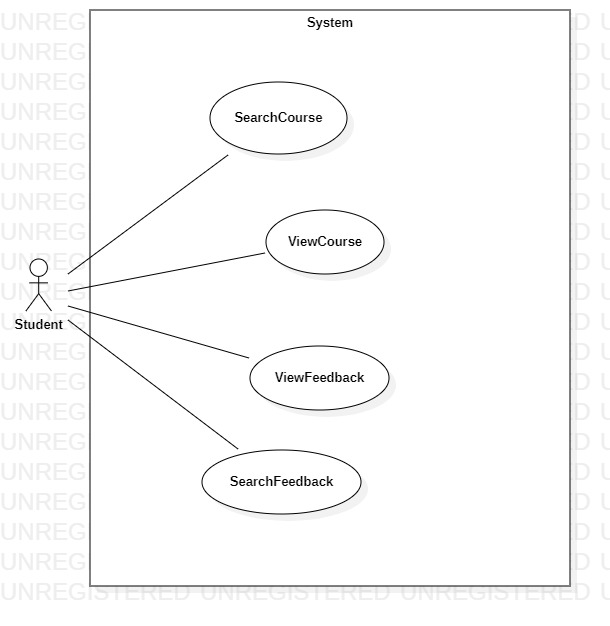
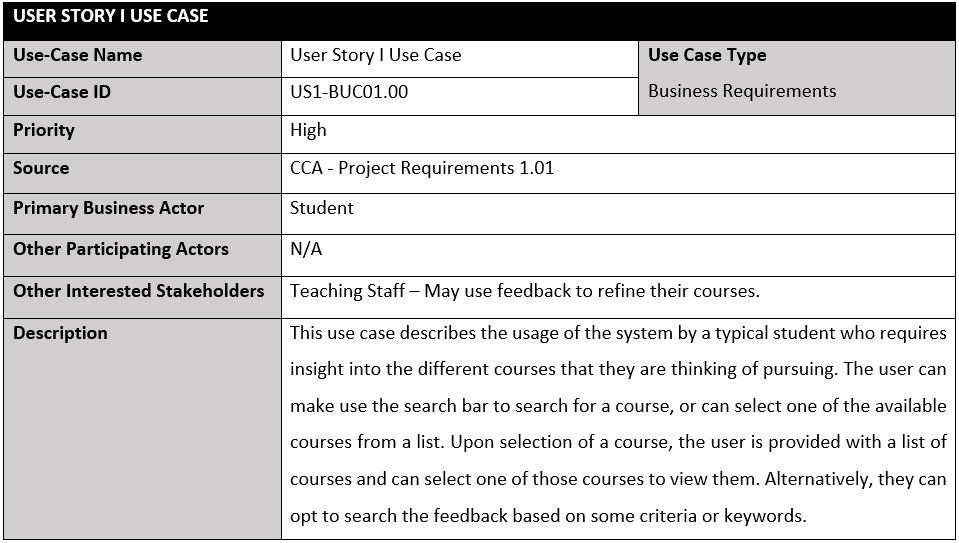
USER STORY I REQUIREMENTS
User Requirements:
- The system should allow students to view anonymous reviews on the courses offered in DCIT.
- The forum should summarize the reviews for the user to give them an overall analysis of any course.
System Requirements:
- The system should analyze a review to determine whether it is positive or negative.
- The system should have a way to search for a particular DCIT course if given a course title or course code.
- Each review should be given a time stamp of the time and date on which it was posted.
- The summary should show the overall review of the course, as well as a summary of recent reviews of the course that were posted in the last semester. This would be done to reflect if any recent changes or improvements were made to the course.
Functional Requirements:
- Any user should be able to view the reviews or post a review on any course within DCIT.
- The system should be able to determine if a review is positive or negative based on certain words or phrases in the post.
- The system should group and be able to filter reviews based on if they are negative or positive.
- Should a user write any foul language in a review, the system should detect this and refuse to post the review.
Non-functional Requirements:
- Users should not have to login to view or post reviews on a course as the entire forum is anonymous.
- Users should not be able to swear, use foul language or harmful words on the forum.
- There should be no limit as to the number of reviews that can be posted for a course.
– Brandon Bharath
USER STORY, PERSPECTIVE II
Charles Edgeworth is a second-year student registering for courses. While browsing courses, a particular level II computer science course interested him as he enjoyed its level I equivalent; which involved a programming language that he liked. Charles checked the course outline and it seemed to suggest that it further develops the ideas taught in the level I course, just at a higher level. So, he registered for the course, but it was far from what he was expecting. The entirety of the course focused only on diagrams rather than the language itself and, in fact, there was not a single line of code written throughout the entire course. He wanted to leave feedback so that future students know what to expect. He therefore turned his attention to a platform for contributing anonymous feedback about DCIT courses. Charles used this platform to make a post about the course; honestly, openly criticizing it because it was not what he expected it to be. He hopes that future students can make use of his feedback to make informed decisions when choosing courses as he believes it is important for students to know that a course may not be exactly what the course description describes it to be.
Simple Use Case Diagram for User Story, Perspective II
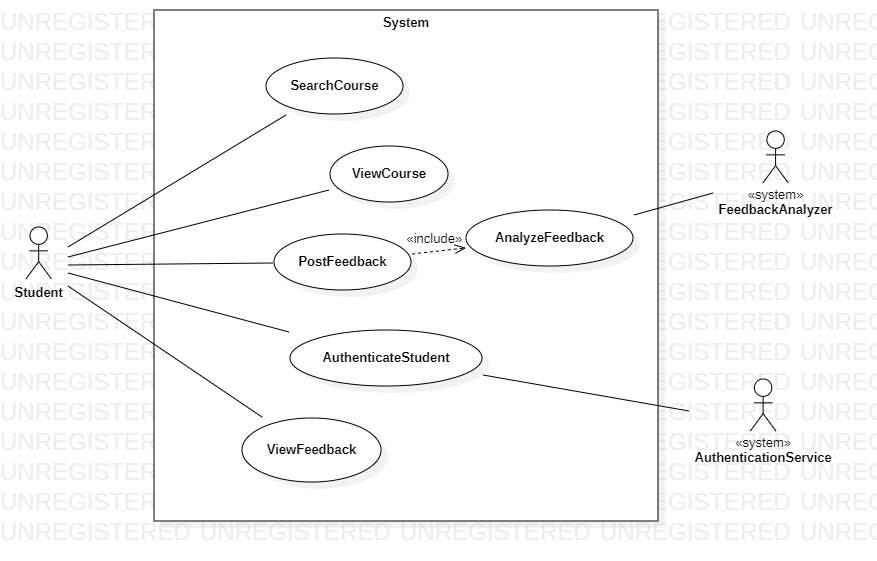
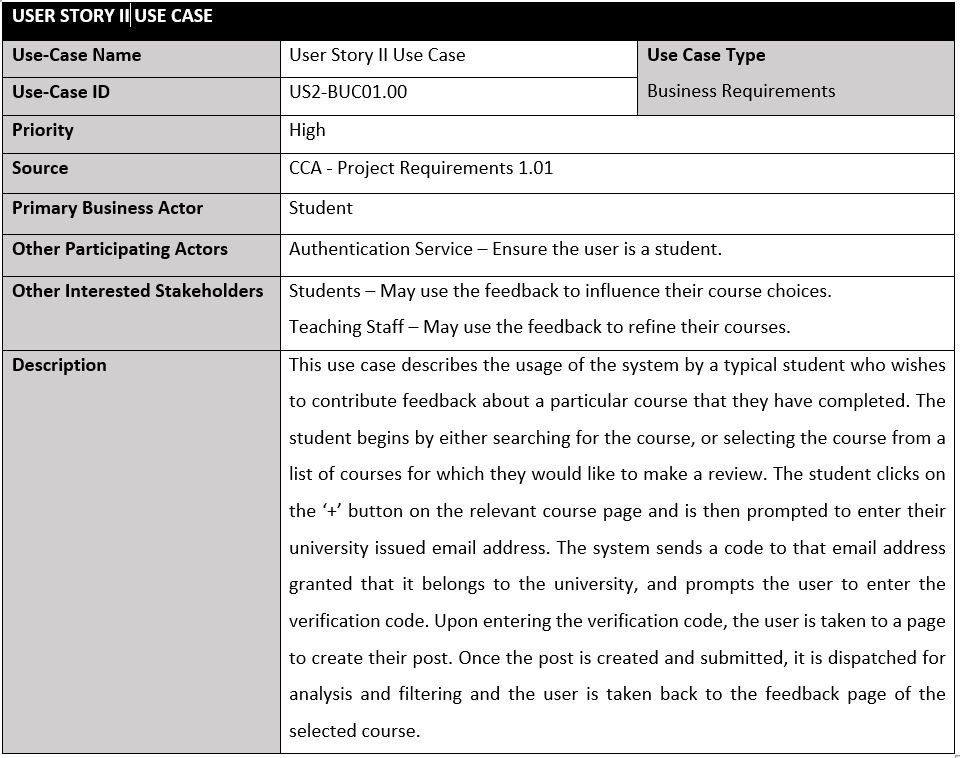
USER STORY II REQUIREMENTS
User Requirements:
- The system should allow for the collection of feedback via a textbox that is editable.
- Submission of feedback is clearly indicated by a visual cue.
- Interaction with the system can be done with a personal computer or mobile device.
System Requirements:
- System should be accessible from anywhere via an internet connection and a modern browser.
Functional Requirements:
- The feedback entered into the system is stored and displayed to other users via the forum.
- The feedback given is anonymous and there is no association of the feedback with a given student.
- The feedback given is analyzed automatically to determine the type of feedback that is received.
Non-Functional Requirements:
- The system should be responsive such as to not cause delays more than 5,000ms.
– Sayaad Ali
USER STORY, PERSPECTIVE III
Jack Maxwell is a lecturer in the University of the West Indies in the Department of Computing and Information Technologies. It is his 3rd year teaching the COMP 1600 course and Jack is beginning to wonder if his students find his lectures intuitive. As a result, Jack turns to the DCIT Community Course Assessment application for feedback. During the semester, he requests that his class use the app to give criticism. Every week, he opens the app and searches for new posts related to the COMP 1600. He is greeted with the thoughts of various anonymous students that have taken the course and the various criticisms about the way that the course is conducted. Using this information, he can plan his future course content with the needs of the students in mind. Additionally, he can see whether his changes are making a positive or negative impact.
Simple Use Case Diagram for User Story, Perspective III

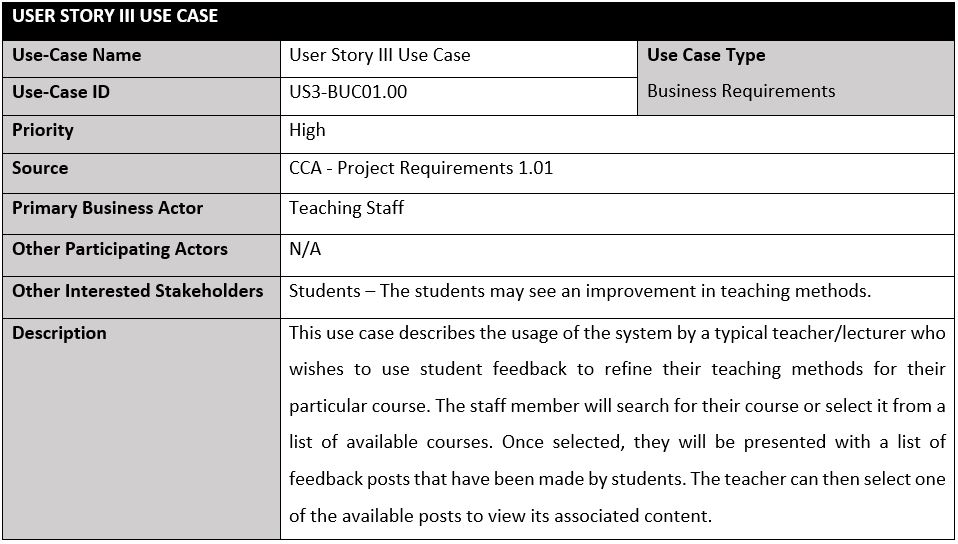
USER STORY III REQUIREMENTS
User Requirements:
- The app should allow for students to view anonymous reviews on the courses offered in DCIT.
System Requirements:
- The app shall store and display each post made by users.
- The app shall provide a method by which a user could search for all posts related to a keyword.
Functional Requirements:
- The system shall allow users to post their opinions on a public forum
- The system shall ensure the anonymity of each of its users
- The system shall allow users to view posts made by other users in the past
- The system shall allow users to search for posts with various keywords
Non-Functional Requirements
- The system should provide a friendly and intuitive graphic user interface.
- The system should be capable of storing large amounts of data without affecting its performance.
– Tevon Thatcher